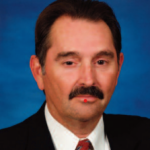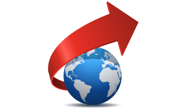Raw Material Prices

Miller on Raw Materials: Iron ore tariff woes
Written by Stephen Miller
April 14, 2025
There are several other tariffs implications concerning the ferrous raw materials sector. In addition to tariffs on DRI/HBI imports, there will be also be a tariff on raw materials imported to domestically based metallics producers.
In the US, there are three producers of direct-reduced iron/hot-briquetted iron (DRI/HBI). They are ArcelorMittal, Corpus Christi, Texas; Nucor, Convent, La.; and Cleveland-Cliffs, Toledo, Ohio.
The modules located in Texas and Louisiana do import DRI-grade pellets (65-67% Fe content) from Europe, Canada, and Brazil.
Material from both Brazil and Europe currently will be tariffed at 10%, or perhaps higher for Europe. The threat of tariffs on Canadian iron ore pellets has made reliance on material originating there too risky.
A problem could exist with replacing these foreign pellets with those sourced in the US. There are not many producers who could supply at acceptable prices.
SMU reached out to an expert on iron ore to get his take on this situation. There may be options for domestic DRI/HBI producers to source from US- based pellet producers to avoid tariffs, but not without additional expense.
MagIron?
One option, according to our source, could be material being developed by MagIron, a company based in Indiana.
MagIron is hoping to produce a DRI-quality pellet using older iron ore tailings from defunct iron ore mining operations in Minnesota. However, the freight costs from Indiana to Louisiana or Corpus Christi would be very high. It may be cheaper to pay the tariff.
This plant would be for future supplies as MagIron has to acquire the pelletizing plant and upgrade the existing facilities. It has already acquired the Magnetation Inc. asset in Minnesota, which has already been upgraded.
Keetac
Another option is the recently completed U.S. Steel-owned Keetac pellet facility in Minnesota.
This project will be capable of producing DRI-grade pellet and/or traditional blast furnace pellets.
It is debatable if U.S. steel would agree to supply its EAF competitors with a supply of these pellets so they could avoid the tariffs.
Even if agreed to, there again are increased logistical costs to supply Southern-located DRI/HBI modules.
However, an option would exist if they are willing to toll DRI pellets through the Arcelor Mittal HBI plant in Texas in exchange for HBI supplies to the U.S. Steel-owned Big River Steel Plant in Arkansas.
Cliffs
Finally, Cleveland-Cliffs produces DRI-grade iron ore pellets in Minnesota, which supply their HBI plant in Toledo.
While the logistical costs to send material into the Gulf would be challenging, it is questionable if Cleveland-Cliffs would agree to sell material to the EAF-flat roll segment.
These are not great options for US-based producers. Again, if tariffs are held at 10%, it could be more economical to pay the tariff.
If it goes to 20% from Europe, it may not be. If the threat of blanket tariffs of 25% on Canada subsides, then Canadian cargoes may solve the problem. However, with the uncertainty of what tariffs could be imposed and when, the shipments from Canada are right now deemed too risky.

Stephen Miller
Read more from Stephen MillerLatest in Raw Material Prices

Trump’s tariffs could have unforeseen impacts on ferrous raw materials
The imposition of reciprocal tariffs by President Trump as explained on Wednesday afternoon has rattled virtually every market. This policy has some advantages for the steelmaking sector, but there may be some disadvantages that were not considered, especially for the EAF producers of flat-rolled.

US pig iron tags hold despite potential scrap price drop
The price of pig iron for the US market remains firm despite a potential drop in domestic ferrous scrap prices going into April.

CRU: Ramaco chief takes bullish stance in bear market
While overall steel demand remains weak in the near term, there are reasons to expect metallurgical coal prices will increase over the course of the year, Ramaco says.

Pig iron market picks up speed after March scrap settle
“The next months are going to be good ones for pig iron producers," according to one source.
